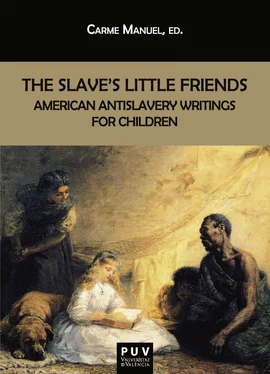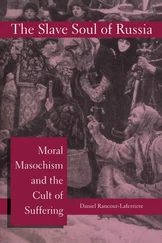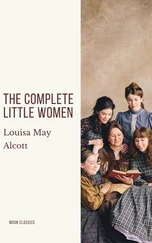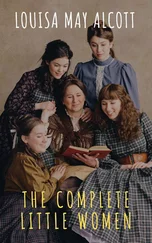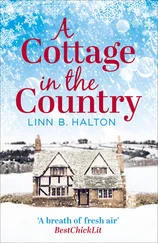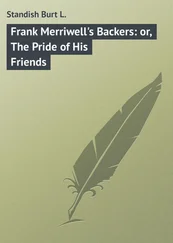Timeline
1772 Lord Mansfield rules on the Somerset case (once in Britain slaves cannot be forced to return to the colonies, thus granting them de facto emancipation)
1773 Phillis Wheatley, Poems on Various Subjects
1775 Philadelphia Society for Promoting the Abolition of Slavery formed
1786 Thomas Clarkson, An Essay on the Slavery and Commerce of the Human Species, Particularly the African (London)
1788 The U.S. Constitution is ratified. It protects slavery
1789 Olaudah Equiano, Interesting Narrative (London; 1791 American edition)
1791 Slaves’ rebellions on St. Domingue Eli Whitney patents the cotton gin
1793 First Fugitive Slave Law passed by Congress
1804 Defeat of the French in St. Domingue. Haiti becomes the first independent black nation
“The Grateful Negro,” Maria Edgeworth (in PopularTales )
1807 Britain abolishes the African Slave Trade
1808 United States abolishes the African Slave Trade
1816 American Colonization Society founded to encourage freed blacks to return to Africa
1820 Missouri Compromise allows Missouri to become a slave state, establishes Maine as a free state, and bans slavery in the territory west of Missouri
The Re-captured Negro , Martha Sherwood
1821 Missouri admitted to the Union as a slave state Benjamin Lundy establishes the first American antislavery newspaper, The Genius of Universal Emancipation , in Mt. Pleasant, Ohio
1822 Denmark Vesey, a free black, leads a slave uprising in Charleston, SC.
1823 The Adventures of Congo in Search of His Master; an American Tale (London, Boston 1835). Eliza Farrar
“Old Betty” (1823), Margaret Bayard Smith
1824 Liberia, on the west coast of Africa, is established by freed American slaves
1826 Juvenile Miscellany , editor Lydia Maria Child
1827 The First African American newspaper, Freedom’s Journal , founded by John Russwurm and Samuel Cornish in New York
“The Negro Nurse” (1827), Isabel Drysdale
1829 David Walker, Appeal in Four Articles
1831 William Lloyd Garrison publishes The Liberator Nat Turner’s rebellion in Southampton County, Virginia
“Jumbo and Zairee,” Lydia Maria Child( Juvenile Miscellany , January-February)
1832 Garrison founded Massachusetts Anti-Slavery Society
1833 American Anti-Slavery Society founded in Philadelphia Slavery outlawed in Canada and all other British possessions
1834 “Mary French and Susan Preston,” Lydia Maria Child( Juvenile Miscellany , May-June)
Picture of Slavery in the United States , George Bourne
1835 American Anti-Slavery Society begins mailing abolitionist materials to the South. Female antislavery societies—integrated by white and black middle class women— are organized in Boston and Philadelphia
The Slave’s Friend (1835-1837)
1836 “Gag rule,” which prevents the discussion of petitions about slavery, passed in U.S. House of Representatives (it will end in 1844)
“Mary French and Susan Easton” (1836), Lydia Maria Child
1837 The Vigilance Committee, under to the leadership of African American Robert Purvis, is organized in Philadelphia to help fugitive slaves Slavery Illustrated in its Effect upon Woman , George Bourne
1839 Liberty Party is created by a branch of abolitionists to fight against slavery The African slaves aboard the Amistad revolt American Slavery As It is , Theodore Weld
1840 American Anti-Slavery Society splits over the issue of the public involvement of women. Dissidents opposed to women form the American and Foreign Anti-Slavery Society.
World Anti-Slavery Convention (London). American women are not allowed to serve as delegates
1841 Amistad case reaches U.S. Supreme Court; John Quincy Adams (1767-1848) defends the Africans
1845 Frederick Douglass publishes his Narrative of the Life of Frederick Douglass, an American Slave, Written by Himself
1846 Mexican-American War begins
The Liberty Cap (1846), Eliza Lee Cabot Follen
The Anti-Slavery Alphabet (1846), Hannah and Mary Townsend
1847 Frederick Douglass publishes the North Star , an abolitionist newspaper
1848 Mexican-American War ends
Free Soil Party is created to stop the spread of slavery into the Western territories Slavery is abolished in all French territories
Women’s Rights Convention takes place at Seneca Falls
The Young Abolitionists; or Conversations on Slavery, Jane Elizabeth Jones
1849 Harriet Tubman escapes from slavery and becomes a conductor on the Underground Railroad
Cousin Ann’s Stories for Children, Ann Preston
A Picture of Slavery for Youth (184[?]), Jonathan Walker
1850 Compromise of 1850. Fugitive Slave Act
1852 Uncle Tom’s Cabin, Harriet Beecher Stowe
1853 Pictures and Stories from Uncle Tom’s Cabin, Harriet Beecher Stowe
1854 Kansas-Nebraska Act passed; Republican Party founded
Louisa in her New Home (1854), Sarah C. Carter
1855 Ralph; or, I Wish He Wasn’t Black, Harriet Newell Greene Butts
1856 Warfare breaks out in Kansas over slavery
1857 Dred Scott decision holds that both free and enslaved African Americans are not citizens
1859 John Brown unsuccessfully raids U.S. arsenal at Harpers Ferry. He is executed
The Child’s Anti-Slavery Book, Containing a Few Words About American Slave Children and Stories of Slave-Life, Julia Colman, Mathilda G. Thompson
1860 Abraham Lincoln (1809-1865) elected 16th president
1861 Civil War begins; Kansas admitted to the Union as a free state
1862 Step by Step, or Tidy’s Way to Freedom, Mrs Helen E. Brown
1863 Lincoln issues the Emancipation Proclamation
1864 The Gospel of Slavery: A Primer of Freedom, Iron Gray(Abel C. Thomas)
1865 Civil War ends; Lincoln assassinated; Thirteenth Amendment to the Constitution outlaws slavery.
BIBLIOGRAPHY
Primary works
Anonymous. Liberty and Anti-Slavery Song Book . D.S. King: Boston, 1842.
——. Little Eva, The Flower of the South. Aunt Mary’s Picture Book . New York, NY: Phil J. Cozans, 1853. From Uncle Tom’s Cabin and American Culture Online Exhibit, presented by Stephen Railton & the University of Virginia. http://utc.iath.virginia.edu/childrn/cbcbambt.html
——. The Abolitionist: Or Record of the New England Anti-Slavery Society . Ed. by a Committee. Garrison & Knapp: Boston, 1833.
——. Babay: The True Story of a Good Negro Woman . Cheap Repository Tracts 1. London: J. Marshall and R. White, 1795.
Bourne, George. Picture of Slavery in the United States of America: Being a Practical Illustration of Voluntaryism and Republicanism . Middleton, Connecticut: Edwin Hunt, 1834.
——. Slavery Illustrated in its Effects Upon Women and Domestic Society . Boston: Published by Isaac Knapp, 1837.
Brown, Henry Box. Narrative of the Life of Henry Box Brown, Written by Himself . Manchester, England: Printed by Lee and Glynn, 1851.
Carter, Sarah C. Louisa in her New Home . Philadelphia: Pennsylvania Antislavery Society, 1854.
Child, Lydia Maria. Evenings in New England: Intended for Juvenile Amusement and Instruction . Boston, Cummings, Hilliard &Co., 1824.
Читать дальше
